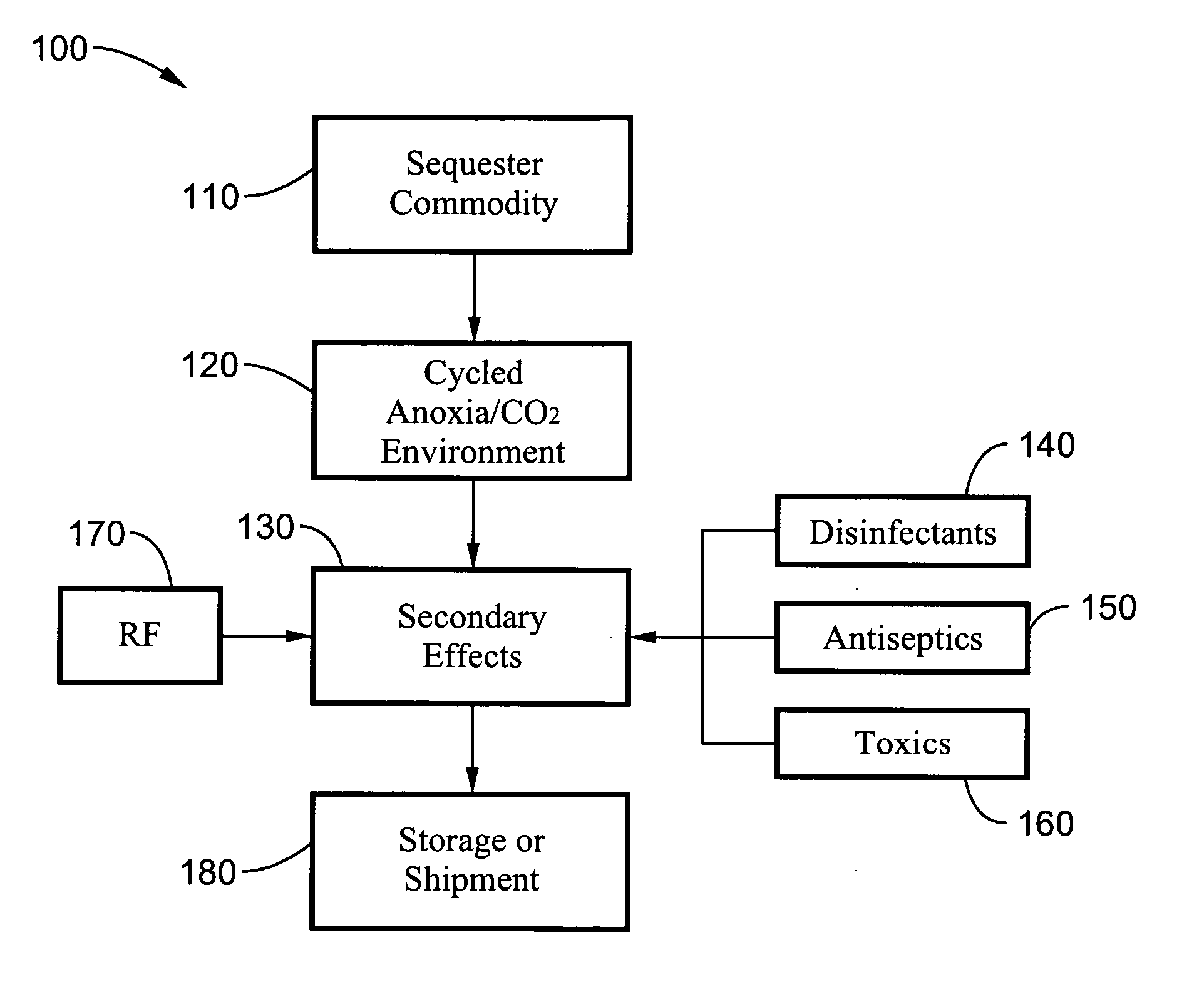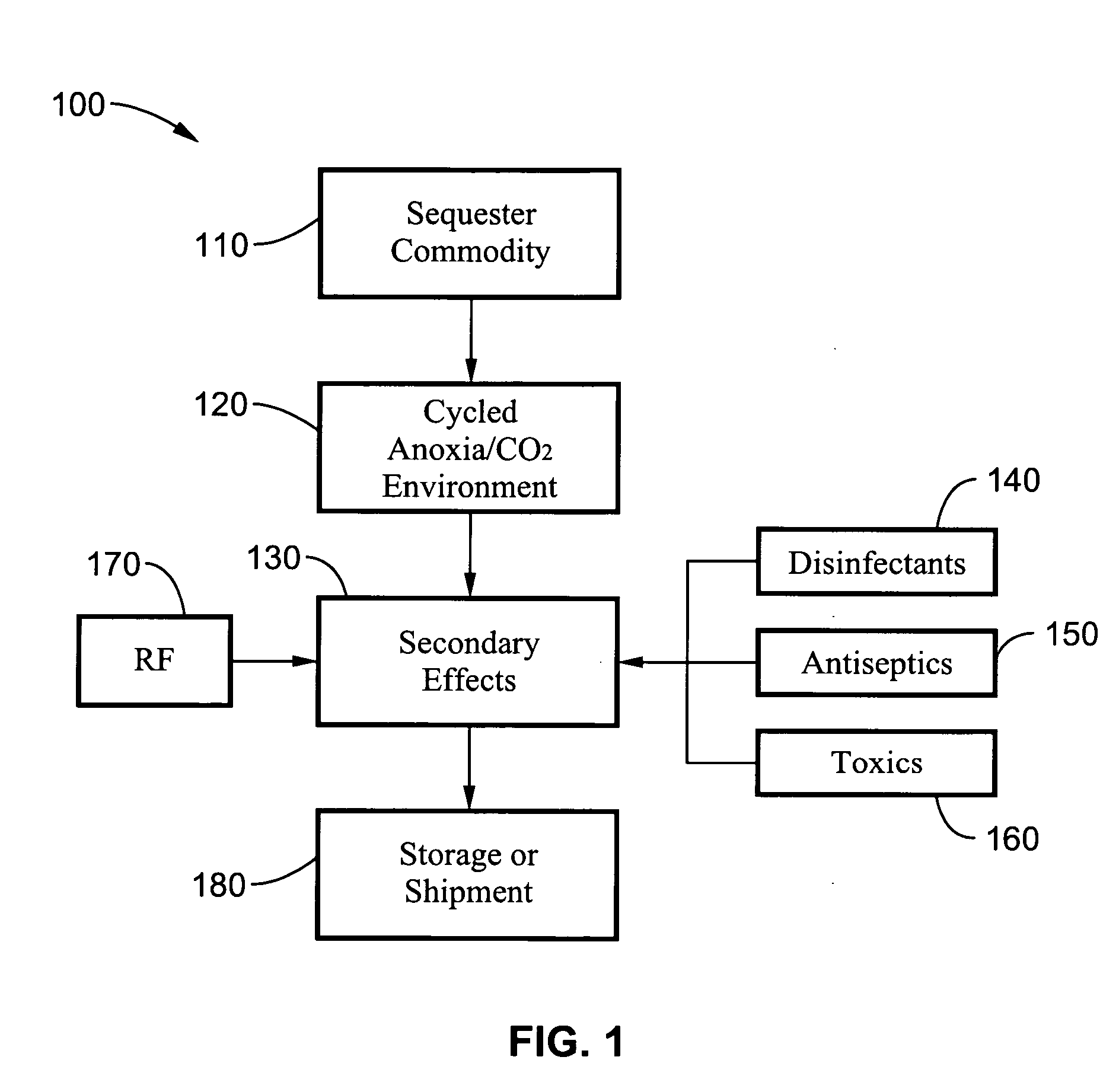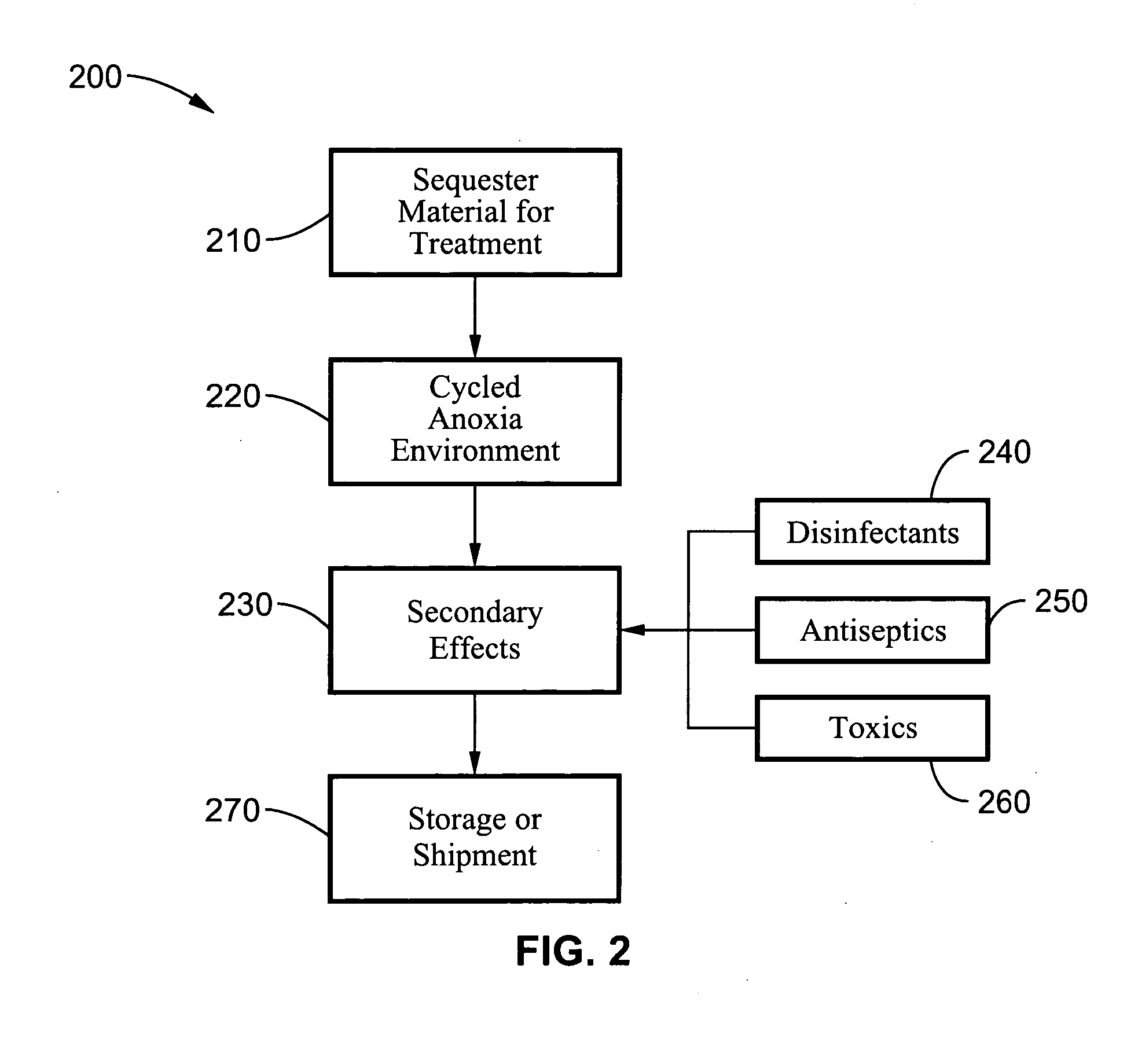Disinfestation and disinfection of food, perishables and other commodities
a technology for disinfection and food, and other commodities, applied in the field of insect and other pest control treatments, can solve the problems of reducing the overall capacity of the respiratory system to exchange gases, damage to the tubular respiratory network, etc., and achieves rapid disinfestation, quarantine level disinfestation, and reduce the shelf life or storage life of a commodity.
- Summary
- Abstract
- Description
- Claims
- Application Information
AI Technical Summary
Benefits of technology
Problems solved by technology
Method used
Image
Examples
example 1
[0105] Experiments involving a hypobaric condition were conducted with a Precision Vacuum Oven (PVO) provided with a manometer (−30 inches of Hg to +15 psi range) and internal Hg thermometer and were modified to allow for vacuum and pressurized purging operations with different gas mixtures. A dry pump was used to establish vacuum up to −14 psi (−724 mm Hg). Purging was conducted with carbon dioxide up to reaching barometric pressures or slightly below (−1 psi). Carbon Dioxide was used as a source for purging and for establishing the high concentration carbon dioxide environments. Nitrogen gas was also used as an inert ballast gas to utilize different CO2 gas environments to establish the proper conditions in some experiments.
[0106] The effect of a low oxygen / high carbon dioxide environment at below the ambient barometric pressure on Ants, Mites, Thrips, Harlequin Bugs, Aphids, Fruit Flies at different stages of development was evaluated. It can be seen that the controlling effect ...
example 2
[0112] To demonstrate the effectiveness of the procedure in a hyperbaric environment, experiments were conducted with a pressure chamber (PC) fitted with a manometer (0 to +15 psi) and proper on / off valves. The chamber was capable of withstanding 5-10 psi pressure without major gas losses for over a 24-hour period.
[0113] Purging was conducted in multiple cycles with a high-pressure carbon dioxide flow directly from 2,500-psi storage cylinders at room temperature. Pressure (+2 to +5 psi) was determined with manometers and provided a rapid purge of the pressure chamber environment containing the samples to be treated. During purging, a carbon dioxide / Air volume ratio greater than 3 was used to assure proper air removal.
[0114] Table 12, shows the effects of the treatment at hyperbaric pressures on adult ants with three short duration hyperbaric pressure cycles. The Ants show a greater resistance to the hyperbaric anoxic conditions that to the hypobaric treatments.
[0115] Control of d...
example 3
[0120] A demonstration of the effect of a low oxygen-high ballast gas environment with a pressure differential with cycles of below barometric pressure to above barometric pressure and a metabolic stressor on fruit flies was conducted for a short treatment time of one hour. The deleterious effects of hypobaric and hyperbaric conditions with an anoxic environment and the presence of ethanol to provide additional metabolic stress were observed with fruit flies at all biological stages. The various biological forms of fruit flies were exposed to a low oxygen-high carbon dioxide environment with 10 cycles of a pressure differential ranging from −20 inches of Hg to +2 inches of Hg for a one hour treatment period. Ethanol vapor at 1.3 to 2.0 in Hg vapor pressure was introduced to the environment as a metabolic stressor. The results are shown in Table 24. It can be seen that adult, pupa, larval and egg forms of fruit flies were completely eradicated with a one hour treatment period. The su...
PUM
| Property | Measurement | Unit |
|---|---|---|
| Fraction | aaaaa | aaaaa |
| Fraction | aaaaa | aaaaa |
| Fraction | aaaaa | aaaaa |
Abstract
Description
Claims
Application Information
 Login to View More
Login to View More - R&D
- Intellectual Property
- Life Sciences
- Materials
- Tech Scout
- Unparalleled Data Quality
- Higher Quality Content
- 60% Fewer Hallucinations
Browse by: Latest US Patents, China's latest patents, Technical Efficacy Thesaurus, Application Domain, Technology Topic, Popular Technical Reports.
© 2025 PatSnap. All rights reserved.Legal|Privacy policy|Modern Slavery Act Transparency Statement|Sitemap|About US| Contact US: help@patsnap.com



